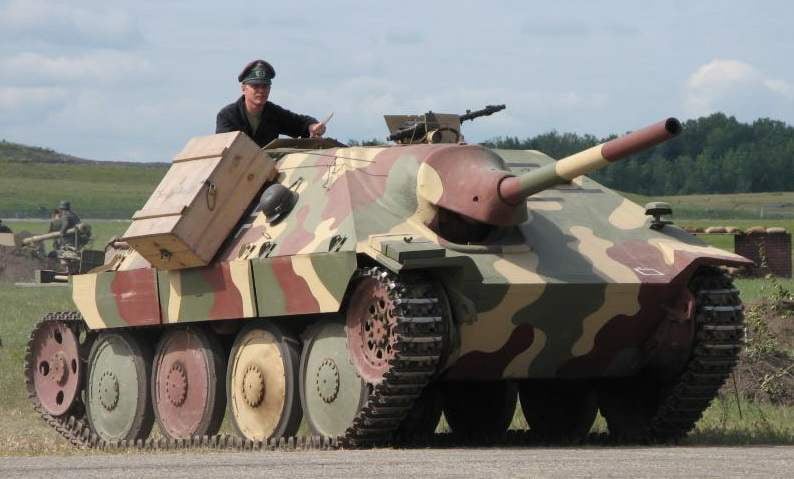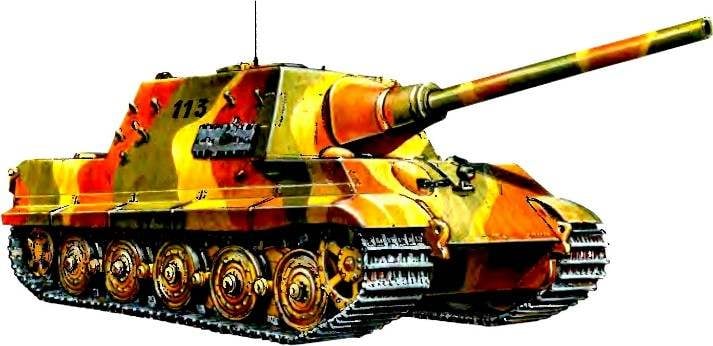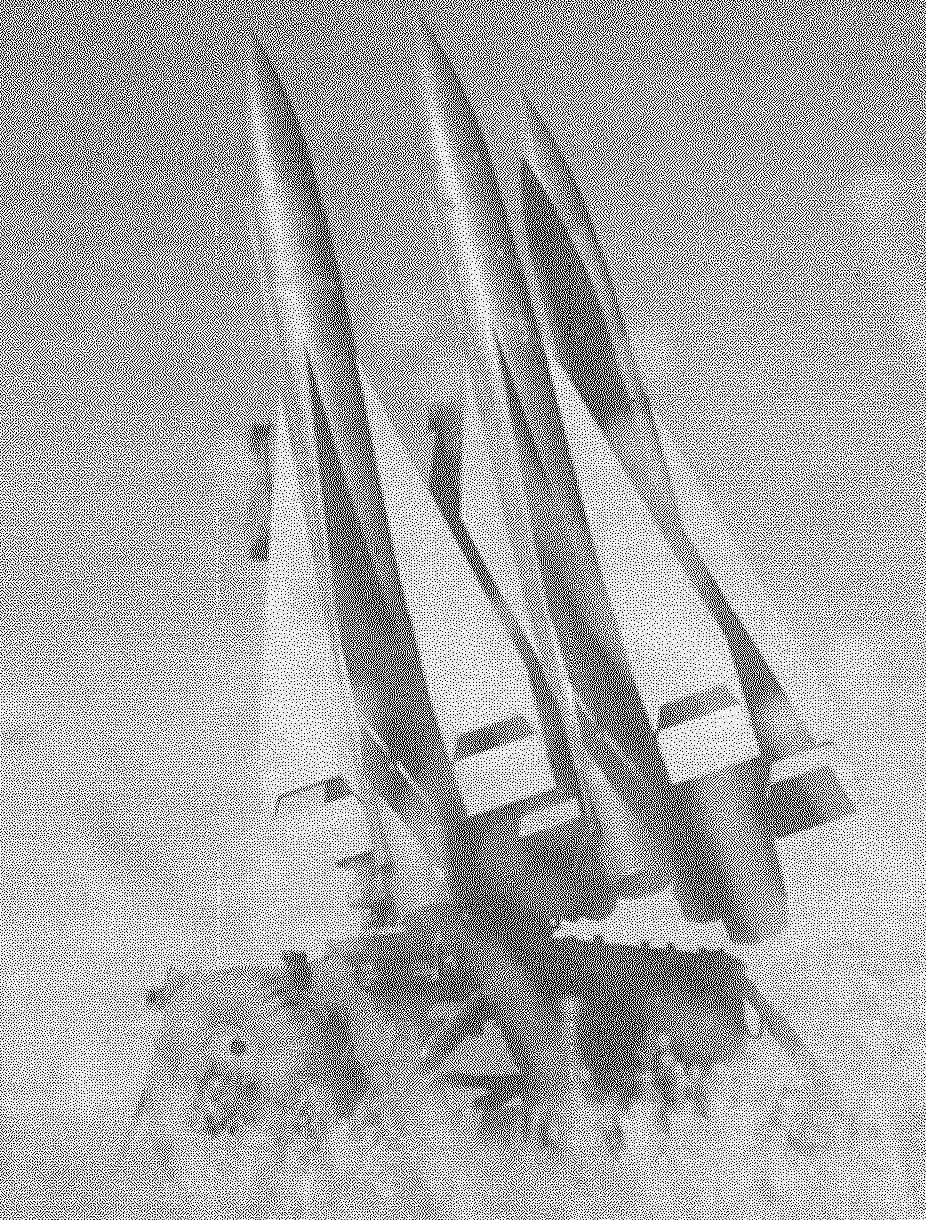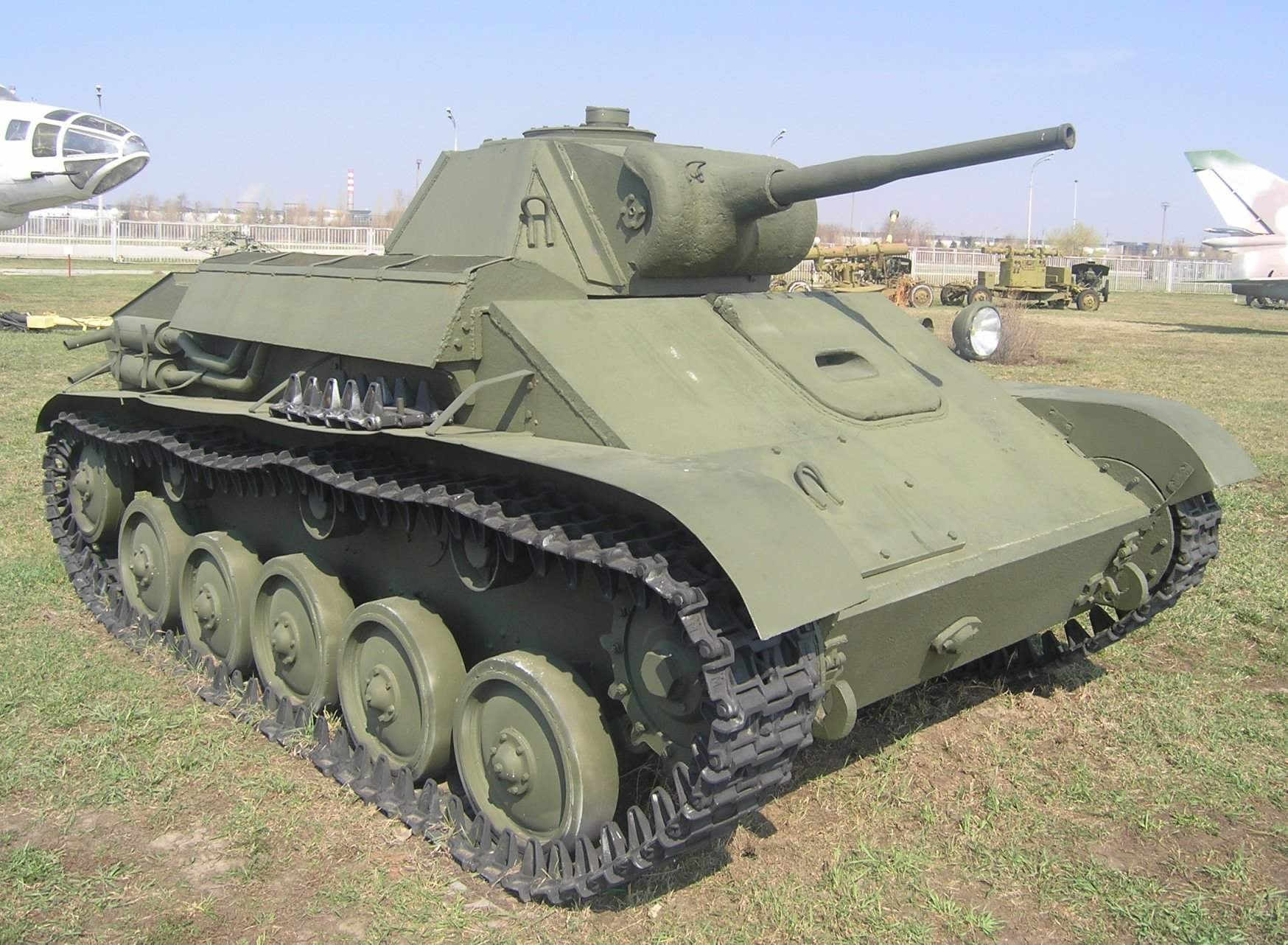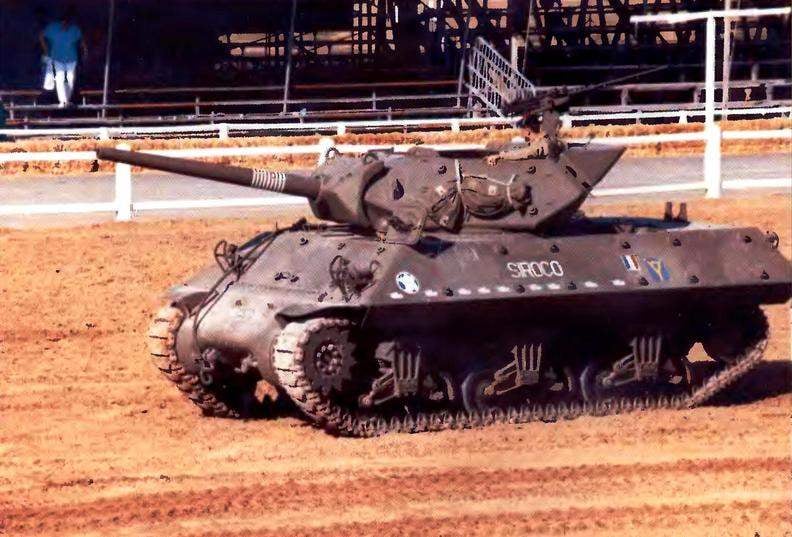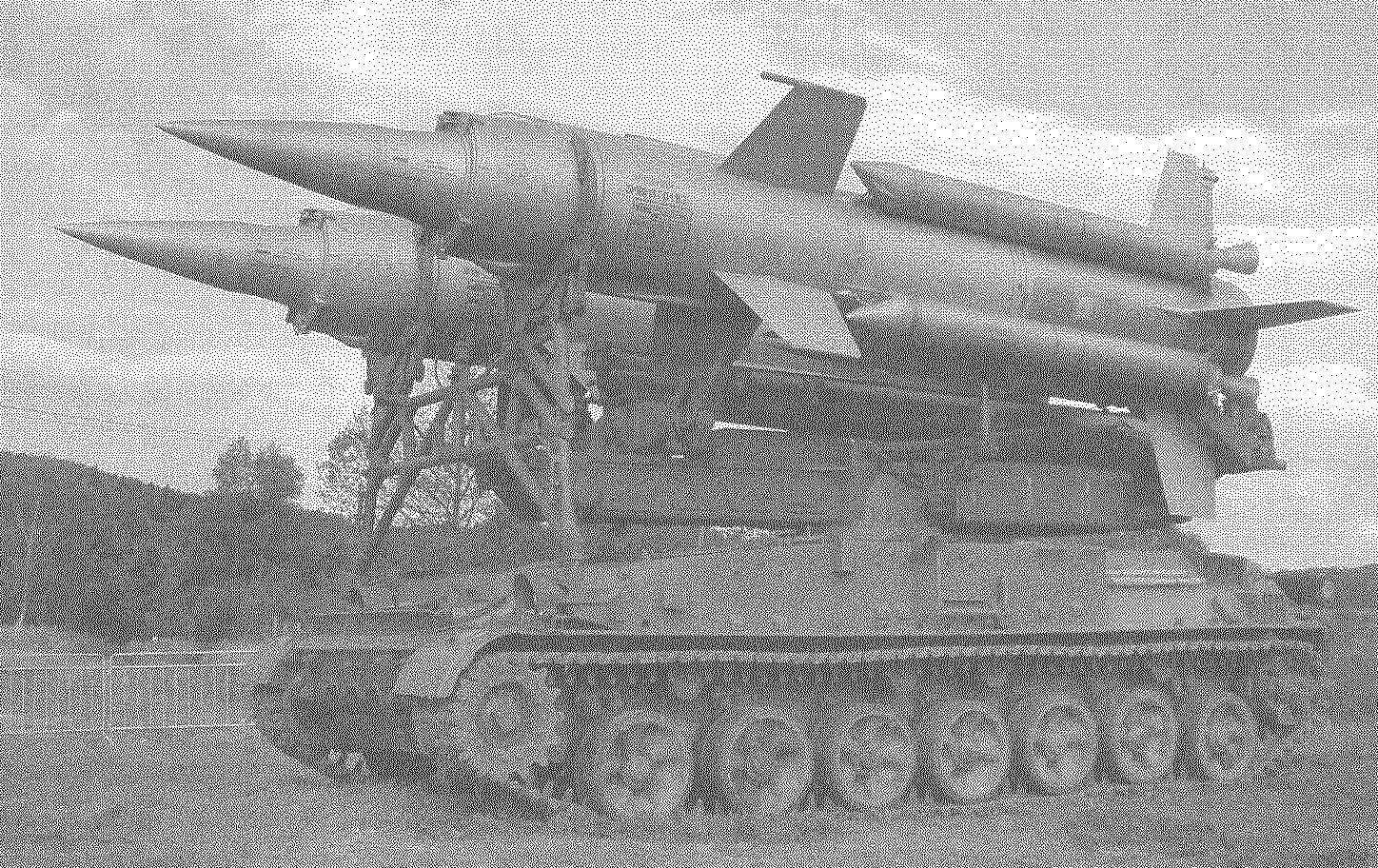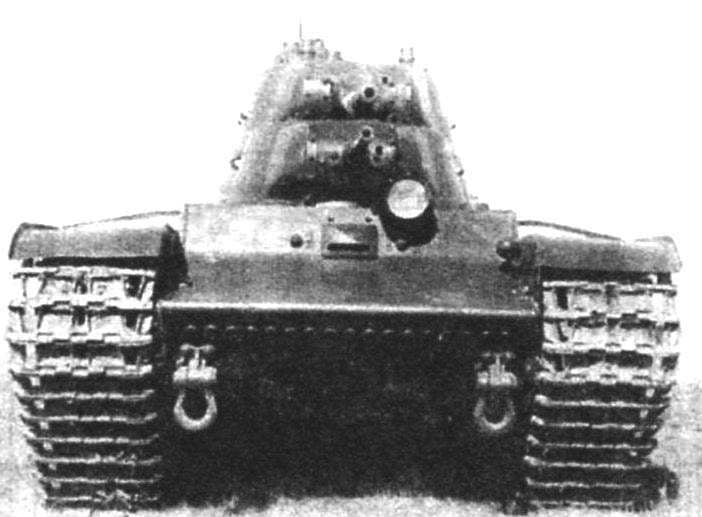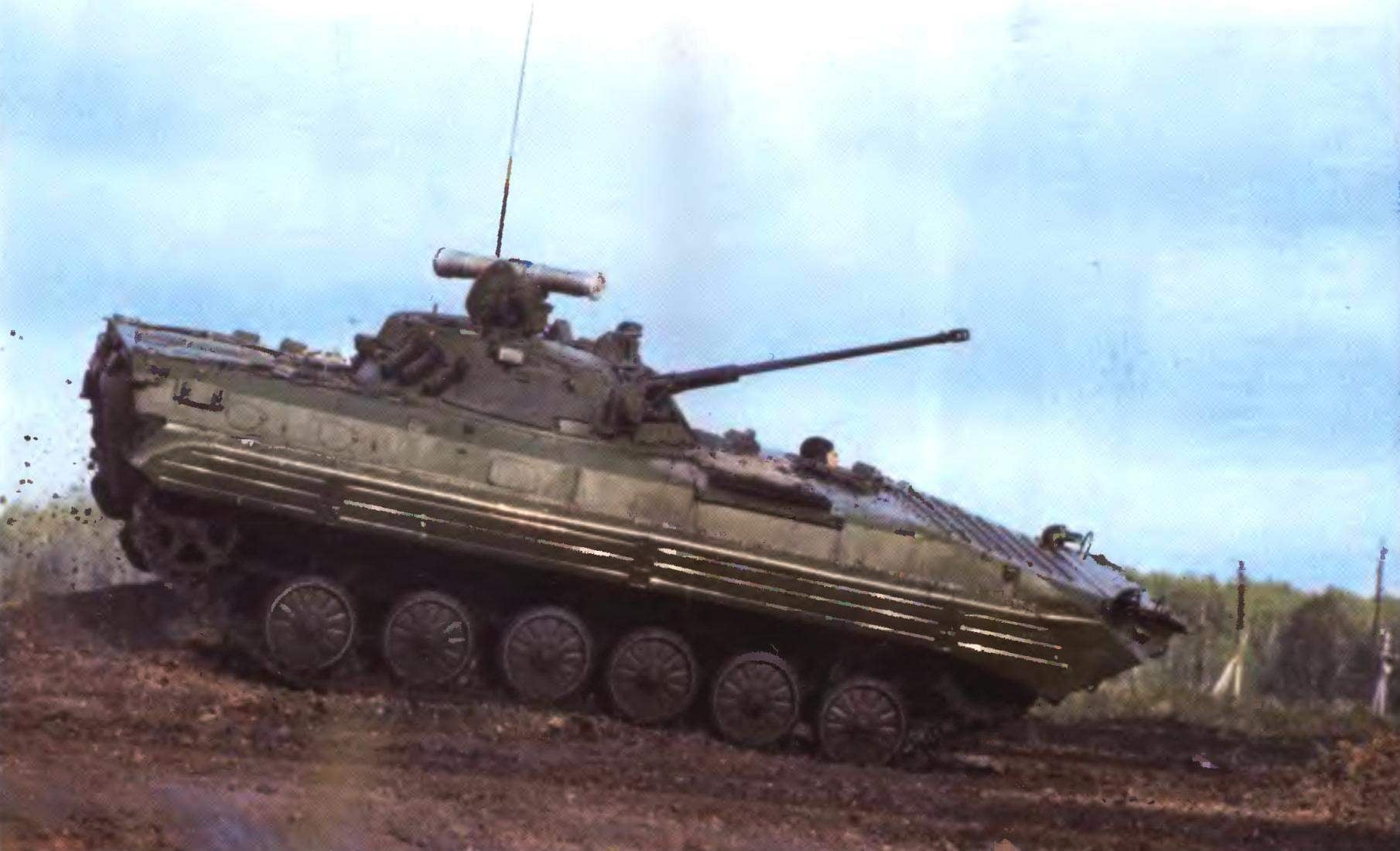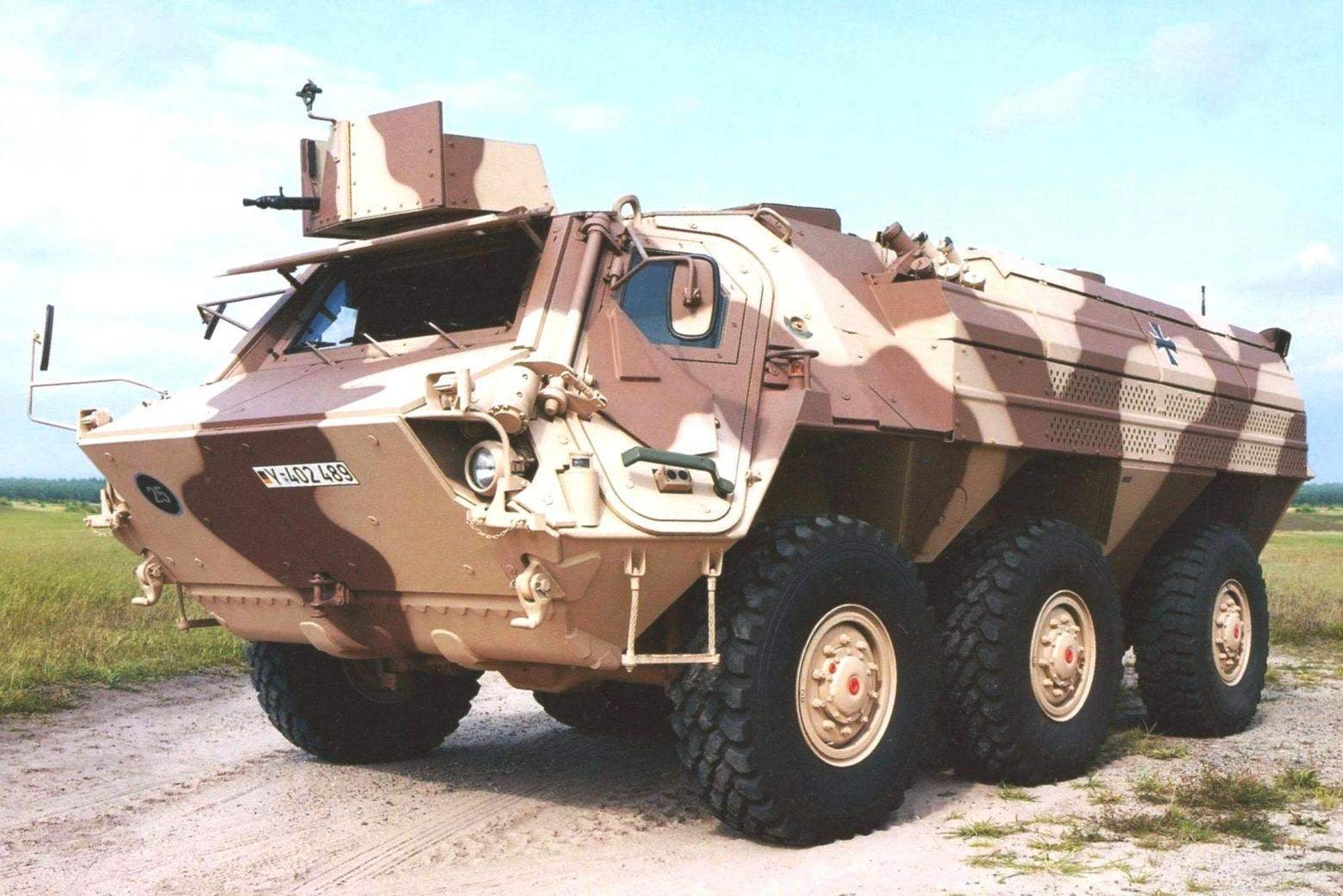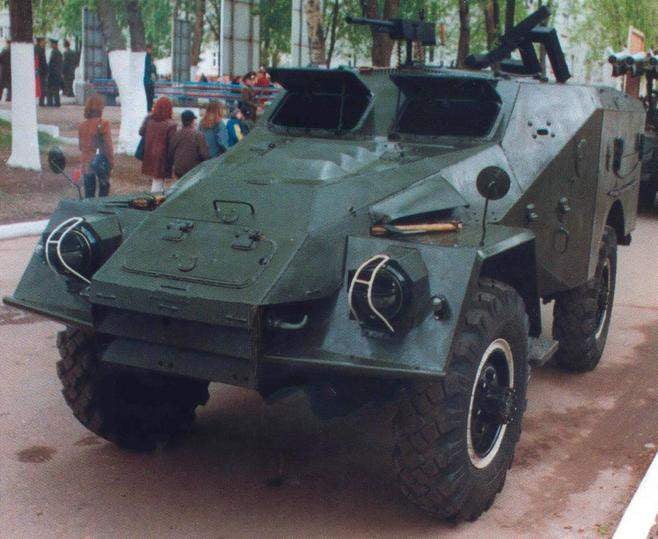 By the end of 1943 the command of the Wehrmacht, it became clear that the light tank destroyers of the family “Marder” is not fully meet their tasks. This was due to the emergence of the opponents of Germany new tanks, better armored and armed. In turn, “Margery”, also had quite a powerful armament, were protected by armor in name only. Needed a new, well-armored compact self-propelled gun — a tank destroyer.
By the end of 1943 the command of the Wehrmacht, it became clear that the light tank destroyers of the family “Marder” is not fully meet their tasks. This was due to the emergence of the opponents of Germany new tanks, better armored and armed. In turn, “Margery”, also had quite a powerful armament, were protected by armor in name only. Needed a new, well-armored compact self-propelled gun — a tank destroyer.
Armor
THE TANK DESTROYER “JAGDTIGER”

During the design of a heavy tank Tiger II Henschel firm in cooperation with the Krupp firm started to create a heavy assault gun based on it a New self-propelled gun was planned to equip 128-mm cannon, high-explosive shell which had a much greater explosive effect, than the 88-mm anti-aircraft gun FlaK 40 Wooden model of ACS in full size was demonstrated to Hitler on 20 October 1943 at the site of ARIS in East Prussia ACS made the Fuhrer the most favorable impression and was followed by “higher” the order to begin its serial production in the following year, on 7 April 1944 the car was named Panzerjager Tiger Ausf V (Sd Kfz 186), later simplified to the Jagdtiger After 13 days produced in the metal of the first sample At full combat weight of 75.2 t ACS was the most difficult of all involved in the Second world war military vehicles.
“HAWK” IS THE STORY OF A HAWK
 On 12 February 1960 on the information channels of the entire world was spread the message of the correspondent of the Agency “United Press international”, which referred to the statement of the head of the Department of research and development at the headquarters of the U.S. army of Lieutenant General A. Trudeau, 29 January for the first time a ballistic missile destroyed in the air with another rocket In the message also stated, used as a target unguided ballistic missile “Onest John” was intercepted and destroyed anti-aircraft missile MIM-23A complex “hawk” during the test on the range white Sands In confirmation of this message in the Ministry of defense was shown a film taken in the test process However, with all technical military significance of this achievement of this quality complex “hawk” missiles and MIM-23A were never in demand in their future fighting career.
On 12 February 1960 on the information channels of the entire world was spread the message of the correspondent of the Agency “United Press international”, which referred to the statement of the head of the Department of research and development at the headquarters of the U.S. army of Lieutenant General A. Trudeau, 29 January for the first time a ballistic missile destroyed in the air with another rocket In the message also stated, used as a target unguided ballistic missile “Onest John” was intercepted and destroyed anti-aircraft missile MIM-23A complex “hawk” during the test on the range white Sands In confirmation of this message in the Ministry of defense was shown a film taken in the test process However, with all technical military significance of this achievement of this quality complex “hawk” missiles and MIM-23A were never in demand in their future fighting career.LIGHT TANK T-70
 In October 1941, it became clear that the new light tank T-60, serial production of which began earlier this month, almost useless on the battlefield, His armor freely fought all anti-tank weapons of the Wehrmacht, and his own arms were too weak to fight with tanks of the enemy. To strengthen the same and then another without major design changes are not possible, the Engine and gearbox had worked in the overdriven mode. Growth of same weight combat vehicle, inevitable in the amplification of booking and weapons just would lead to the release of these units from the building Required a different solution.
In October 1941, it became clear that the new light tank T-60, serial production of which began earlier this month, almost useless on the battlefield, His armor freely fought all anti-tank weapons of the Wehrmacht, and his own arms were too weak to fight with tanks of the enemy. To strengthen the same and then another without major design changes are not possible, the Engine and gearbox had worked in the overdriven mode. Growth of same weight combat vehicle, inevitable in the amplification of booking and weapons just would lead to the release of these units from the building Required a different solution.
“THE WOLVERINE” AND “ACHILLES”
 Simultaneously with the design, testing and deployment of serial production of light anti-tank self-propelled artillery installations (SAU) on the chassis of cars and armored personnel carriers (see “modelist-Konstruktor” No. 1, 2002) in the United States began to create similar military vehicles on tank chassis. In September 1941, the weapons Department was issued an order for the installation of the ACS 3-inch antiaircraft gun M3.
Simultaneously with the design, testing and deployment of serial production of light anti-tank self-propelled artillery installations (SAU) on the chassis of cars and armored personnel carriers (see “modelist-Konstruktor” No. 1, 2002) in the United States began to create similar military vehicles on tank chassis. In September 1941, the weapons Department was issued an order for the installation of the ACS 3-inch antiaircraft gun M3.ROCKETS “CIRCLE”
 In the mid-1950s it became apparent gradual lag of the arms of the Soviet army air defense assets from the reached by that time, the capabilities of air attack. Continuous improvement of aviation, the emergence of tactical ballistic missiles set increasingly high requirements before the antiaircraft means of the ground forces, requiring them to qualitative leap. To achieve it it was possible only through the creation of army air defense anti-aircraft missile systems (3RK), possessed a number of specific features.
In the mid-1950s it became apparent gradual lag of the arms of the Soviet army air defense assets from the reached by that time, the capabilities of air attack. Continuous improvement of aviation, the emergence of tactical ballistic missiles set increasingly high requirements before the antiaircraft means of the ground forces, requiring them to qualitative leap. To achieve it it was possible only through the creation of army air defense anti-aircraft missile systems (3RK), possessed a number of specific features.THE ONLY, BUT POWERFUL
 In early December 1939, the T-100 with a company other machines arrived at the front and soon participated in the fighting against the white Finns on the “Mannerheim line” in the composition of the 90th tank battalion 20th tank brigade. It experienced heavy tank, which was not adopted, not mass-produced, has just finished field tests, and the military command decided to continue the test by sending in the army to the front of the Finnish war. Your main battle tank survived the 19th of December during the break the Finnish positions when the battalion managed to break through the line of bunkers in the area of money. But here one of the vehicles hit a land mine and the T-100 had artillery and machine gun fire for a long time to cover it up by stalking the white Finns, while the crew tried to repair the damage.
In early December 1939, the T-100 with a company other machines arrived at the front and soon participated in the fighting against the white Finns on the “Mannerheim line” in the composition of the 90th tank battalion 20th tank brigade. It experienced heavy tank, which was not adopted, not mass-produced, has just finished field tests, and the military command decided to continue the test by sending in the army to the front of the Finnish war. Your main battle tank survived the 19th of December during the break the Finnish positions when the battalion managed to break through the line of bunkers in the area of money. But here one of the vehicles hit a land mine and the T-100 had artillery and machine gun fire for a long time to cover it up by stalking the white Finns, while the crew tried to repair the damage.
INFANTRY FIGHTING VEHICLE BMP-2

 In the late 1950’s — early 1960-ies there has been a backlog of the USSR from Western countries in the creation of heavy tracked armored personnel carriers. During this period in the armies of NATO were adopted by M113 armored personnel carriers (USA), “Trojan” (UK), VТТ M56 (France) S-30 (Germany) did Not depart from them, and neutrals — the Swedes took his PbV302, and the Austrians — 4K3F. All these machines have a completely closed enclosure and powerful enough weapons — up to 20-mm automatic guns. Heavy tracked armored personnel carrier there were in the Soviet Army — BTR-50P (in the roof — BTR-50PCS). However, this machine, compared to its Western counterparts, had too large dimensions and very bad layout with a front of the troop compartment.
In the late 1950’s — early 1960-ies there has been a backlog of the USSR from Western countries in the creation of heavy tracked armored personnel carriers. During this period in the armies of NATO were adopted by M113 armored personnel carriers (USA), “Trojan” (UK), VТТ M56 (France) S-30 (Germany) did Not depart from them, and neutrals — the Swedes took his PbV302, and the Austrians — 4K3F. All these machines have a completely closed enclosure and powerful enough weapons — up to 20-mm automatic guns. Heavy tracked armored personnel carrier there were in the Soviet Army — BTR-50P (in the roof — BTR-50PCS). However, this machine, compared to its Western counterparts, had too large dimensions and very bad layout with a front of the troop compartment.
THE GERMAN “FOX” IN THE US ARMY
 At the end of the 1960s, the army command of Germany felt it necessary to replace the long-standing armed Bundeswehr tracked armoured personnel carriers M 113 American production and the French “Gocci”. It was assumed for this purpose to develop a new wheeled armored vehicle with a carrying capacity of two tons, besides floating.
At the end of the 1960s, the army command of Germany felt it necessary to replace the long-standing armed Bundeswehr tracked armoured personnel carriers M 113 American production and the French “Gocci”. It was assumed for this purpose to develop a new wheeled armored vehicle with a carrying capacity of two tons, besides floating.SOVIET “SCOUT”
 As you know, during the Second world war armored vehicles in the USSR were made. In this respect the Red Army considerably inferior to the Wehrmacht. To some extent the problem could smooth out the supply of British and American armored vehicles under lend-lease, however, to fully equip at least mechanized infantry battalions of tank and mechanized brigades it was not enough. The main means of transportation of infantry in the red Army until the end of the war remained cars and tanks.
As you know, during the Second world war armored vehicles in the USSR were made. In this respect the Red Army considerably inferior to the Wehrmacht. To some extent the problem could smooth out the supply of British and American armored vehicles under lend-lease, however, to fully equip at least mechanized infantry battalions of tank and mechanized brigades it was not enough. The main means of transportation of infantry in the red Army until the end of the war remained cars and tanks.